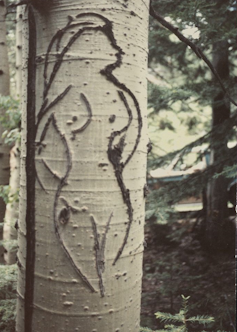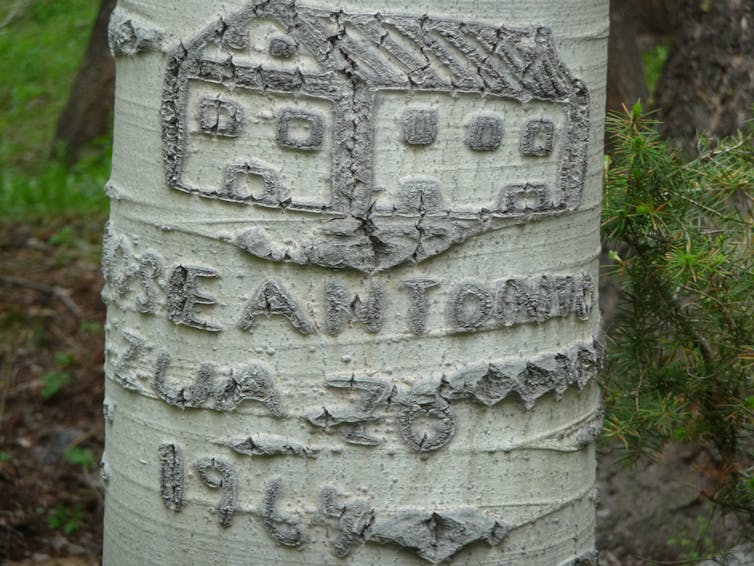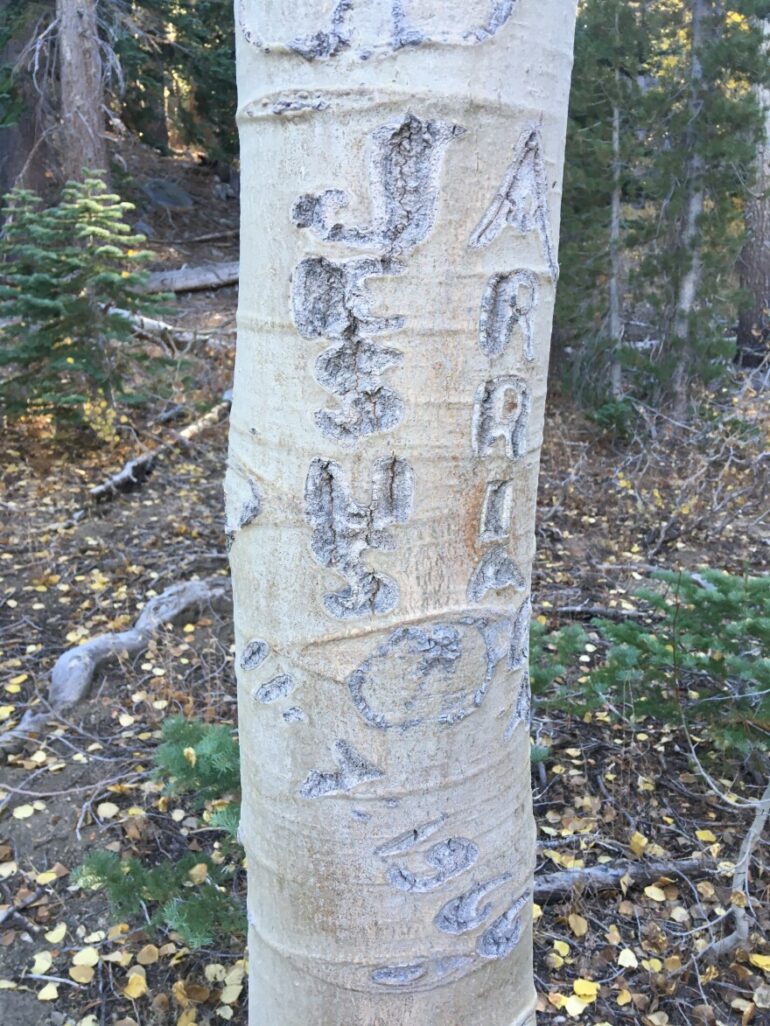Throughout the mountains of the American West, carvings hidden on the trunks of aspen trees tell the stories of the sheepherders who made them as they passed through with their flocks. Most of the men who etched these arborglyphs into the living trees were Basques who, starting with the Gold Rush of the 1840s, had immigrated from the Basque Country that straddles the Pyrenees Mountains.
Our experience of documenting arborglyphs – “lertxun-marrak” in Basque – has deepened over time. At first, we simply tried to decipher what was on the tree. It can be hard to tell what is scarred bark and what is a carving. Gradually, we got better at deciphering the carvings and now hope to spot the oldest and most ornate.

Nudes are a frequent theme among Basque tree carvings.
Joxe Mallea-Olaetxe Lertxunmarrak Collection, Jon Bilbao Basque Library, University of Nevada, Reno
We also came to appreciate the different styles and themes, like in signatures and writing. One herder carves his name, the date and his hometown; another delves into politics; and another carves a hoped-for female companion.
Viewing the decades-old carvings, we’re surrounded by the quiet and solitude of the high mountain range, whether in the Sierra Nevada, Ruby Mountains or Sawtooth Mountains. We literally stand in the footsteps of the herder who created the arborglyph.
These herders left their marks on the aspens, and now we are part of a research collaboration that aims to document and catalog as many of their arborglyphs and the experiences they record as possible before they disappear. About 25,000 arborglyphs have been documented over time, and there are likely at least as many more left to be recorded before they’re lost.

Buildings, mostly inspired by Basque architecture, are often represented.
John Merill, 2010, Idaho Basque Arborglyphs Collection, Special Collections and Archives, Albertsons Library, Boise State University
Who were the sheepherders who left their mark?
Beginning almost 200 years ago, Basques emigrated to the American West to pursue economic opportunities, escape compulsory military service or political persecution, and for other personal reasons. Most were lower class, from agrarian backgrounds, with little to no education or English language skills. As the sheepherding industry grew in the West, it offered these immigrants steady work, and Basques became synonymous with sheepherding through the 1970s, when the economy improved in the Basque Country.
The Basque immigrants practiced a seasonal form of herding called transhumance. The herders trailed the sheep up into the high mountains during the spring and summer for grazing, then migrated in the fall back to the valleys where they spent the winter. This annual cycle meant Basque herders spent their summers alone in the hills.
In Basque, Spanish, French and English, they carved into living aspen trees to…


